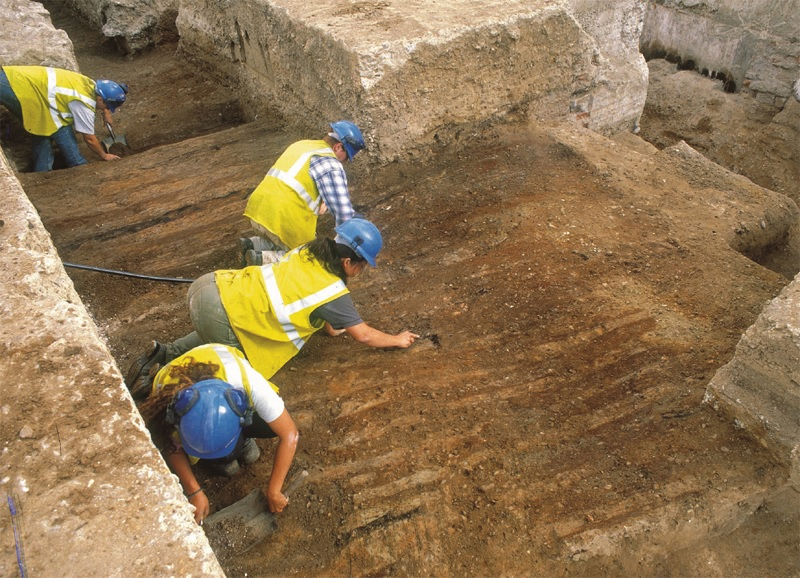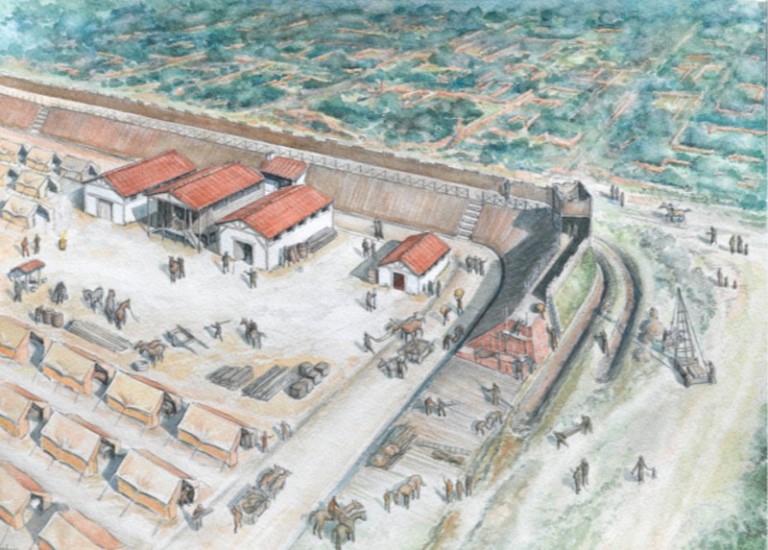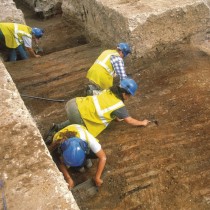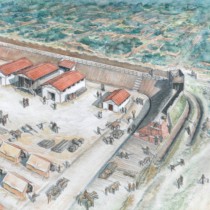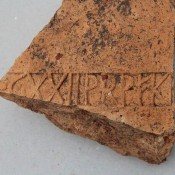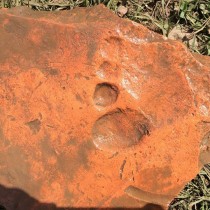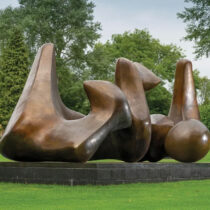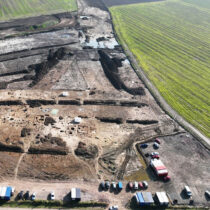A Roman fort, built in AD63 in direct response to the sacking of Londinium by the Queen of the native Iceni Boudica, has been discovered by MOLA in the City of London.
In AD 60 or 61, when the Roman governor Gaius Suetonius Paulinus was campaigning on the island of Anglesey off the northwest coast of Wales against the Druids, Boudica led the Iceni, the Trinovantes, and others in revolt of the Roman occupation.
Boudica led 100,000 Iceni, Trinovantes, and others to fight Legio IX Hispana, and burned and destroyed Londinium, and Verulamium (modern-day St Albans) in AD60/61.
Excavations at Plantation Place on Fenchurch Street has exposed a rectangular fort covering 3.7 acres. The fort was constructed of timber and earthworks, with 3 metre high banks reinforced with interfacing timbers and faced with turves and a timber wall.
A report by MOLAS describes a ‘fighting platform’ running atop the banks, fronted by a palisade with towers positioned at the corners of the forts gateways.
They fort was enclosed by double ditches 1.9 and 3m deep creating a formidable defensive structure from would be attackers.
MOLAS stated “The Roman army were experts in construction; proficiently sourcing local materials from nearby woods and even using debris from buildings burnt in the revolt. It is estimated that a fort of this size would have housed a cohort of approximately 500 men but could have been built by hand in a matter of weeks, perhaps with the help of captive Britons. Archaeologists uncovered a pick axe and a hammer, tools that would have been available to the army for building projects.”
Also discovered within the fort was evidence for roads alongside storage and administrative buildings, a granary, cookhouse and a latrine.
The fort was in use for less than ten years years, evidence points to the garrisonn using tents rather than permanent barrack structures and so evidently was erected as an emergency measure to secure Londinium as an important trading post during its reconstruction.
In AD 120 the much larger Cripplegate fort was constructed and in the 3rd century a substantial wall erected around the town. Archaeologists are yet to find evidence of an earlier fort or military structures for the intervening periods but their search continues.
The full research is published in ‘An early Roman fort and urban development on Londinium’s eastern hill’ by Lesley Dunwoodie, Chiz Harward and Ken Pitt, available via MOLA publications pages.
